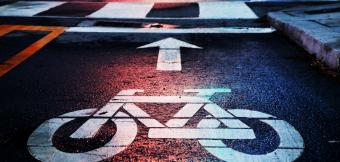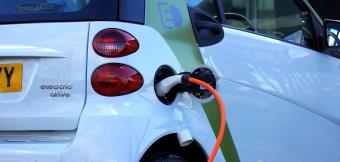
Share your ride
Cars cause a sixth of US and EU carbon emissions. A great way to reduce this is by ride sharing. Three passengers in a car quarters the congestion, travel costs and emissions. If you commute by car, share your ride, or sell the car and take the bus.
Public transport
This is the backbone of urban transportation across the globe. Sharing your ride with hundreds of others on a bus, train or tram is a great way to travel within and across cities.
Integrated public transport means journeys that maximise ease and efficiency in time, cost, comfort, safety, accessibility and convenience. A successful integrated transport system will result in higher demand for public transport, with a reduction in congestion and pollution. However, in many cities there are issues of high cost, low journey frequency, personal safety, overcrowding and lack of integration.
Nevertheless, many journeys that could easily and cheaply be made by public transport are still made by car. People often feel that once they have bought a private car, they should make use of it whenever possible. But the upfront costs of a car are considerable and often underestimated. Alternatives such as a commute on public transport, combined with car club membership, generally make more sense. For example, in Melbourne, Australia a daily public transport commute costs one third of car ownership, saving $10,000 a year.
Ways to share car journeys
Carpooling (also called car sharing, ride sharing and lift sharing) is the sharing of car journeys so that more than one person travels in a car. Drivers and passengers can offer and search for journeys in many ways: casual conversations at work or with neighbours, schemes organised by companies, use of commercial car sharing websites, carpooling agencies, or hitch hiking. The most common form of car sharing is with family members.
Carpooling is commonly used for regular commuting but is also popular for longer one-off journeys. Travel to a music festival or work conference, for example, offer great opportunities for ride sharing. The formality and regularity of arrangements vary between schemes and journeys. Expenses are usually divided equally between all the occupants of the vehicle. The driver doesn’t try to earn money, but shares the cost of a trip they would do anyway.
Vanpools allow groups of people to share the ride like a carpool, but on a larger scale. People share the ride from home or a common meeting location and travel together to a common destination or work centre in a van or minibus. In many cases, an employer may subsidise the vanpool. In some cases, the vehicles are provided and maintained by the municipality.

Car clubs offer a cost-effective and flexible alternative to owning a car. Joining a car club gives you access to a car without the hassle or costs of repairs, servicing or parking. Typically, car club vehicles can be booked by members from an hour up to a whole weekend, or longer. Payment is based on hours used and mileage. Car clubs provide a real alternative to private car ownership and are a very effective way of reducing costs, congestion, and carbon emissions. Most cities now have well-established car clubs.
Taxis are the most expensive form of ride sharing and the least environmentally efficient. However, when you need to make journeys where there is no public transport option they are still better than owning a private car. In the UK, annual payments, insurance and tax on a car would pay for over 1,000 miles of urban taxi journeys. If you are sharing the taxi with friends or family then taxis become an even better option, and can be cheaper than public transport.
Urban design to cut car use
Many areas in our cities, especially the outer suburbs, have been designed around private car ownership and have poor public transport, cycling and walking infrastructure. If you already live in one of these places, your options may be limited. If you're thinking of moving house, don't choose somewhere that forces you into car dependency.
Research evidence suggests several strategies to improve uptake of active and affordable transport, while reducing car dependence and related health inequities. These include local urban design features such as:
- connected and safe street networks (including pedestrian and bicycle infrastructure) that reduce exposure to traffic
- residential areas mixed with commercial, public service and recreational opportunities
- public transport that is convenient, affordable, frequent, safe and comfortable
- higher residential density with different types of housing (including affordable housing) to support the viability of local businesses and high-frequency public transport services
- cycling education and promotion
- car-free pedestrian zones, traffic calming measures, signage and accessibility for all (including wheelchair and pram access)
- These improvements can't be delivered by individuals. Only local authorities and planners can enshrine them in our urban landscapes. But we can show, through lobbying and how we spend our money of transport, that we want a different kind of city, where private car ownership is the exception rather than the norm.
Picture credits: 1) Kenny2332 - Pixabay.com 2) rawpixel - Pexels.com 3) Bruce Mars - Pexels.com
Find an alternative to your solo car commute
Never travel with only one person in the car
Join a car club
Lobby for better urban design where you live



